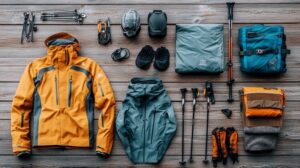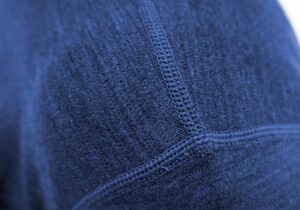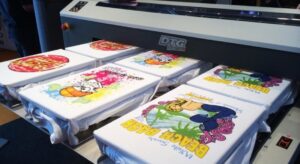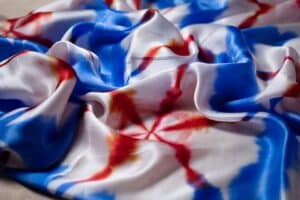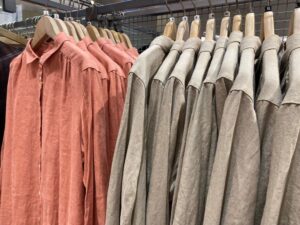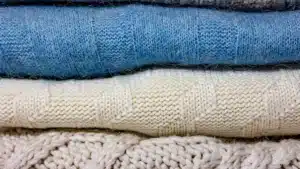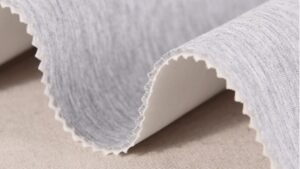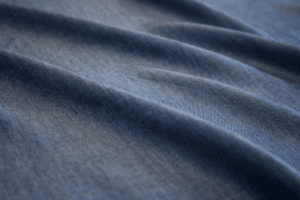
Fleece fabric is known for being useful and popular. It is lightweight but keeps you warm, making it great for casual clothes and outdoor items. People all over the world love it. For example: The fleece jacket market was worth $15 billion in 2023. It is expected to grow to $23 billion by 2032.
Learning about fleece types helps you pick the right one. Whether you want softness, strength, or style, knowing the differences helps you choose the best option for your project or activity.
Key Takeaways
Fleece fabric is light and warm, great for casual clothes and outdoor wear.
Types like polar fleece and microfleece have special uses for different activities.
Picking the right fleece weight is important; lighter ones are good for layering, and heavier ones keep you warm in cold weather.
Fleece is simple to clean, but washing it can release small fibers into nature, so think about eco-friendly choices.
Fleece blankets are loved for being comfy and stylish, perfect for relaxing at home or outdoor trips.
The Origins of Fleece
Fleece fabric has an interesting story that started in the 1970s. A company called Malden Mills created it as a man-made replacement for wool. Wool was warm but had problems. It was heavy, costly, and needed special care. These issues led to the invention of fleece, which copied wool’s warmth but was lighter, cheaper, and easier to clean.
In 1979, Malden Mills introduced Polar Fleece®, made from polyester. Outdoor lovers liked it because it kept them warm without being bulky. It was perfect for hiking and camping. Later, fleece became popular for everyday jacket because it was comfy and useful.
Fleece fabric improved as textile technology advanced. Manufacturers worked to make it softer, stronger, and better at handling moisture. These upgrades allowed fleece to be used for jackets, blankets, sportswear, and more.
Fleece fabric’s history shows how new ideas can solve problems. By fixing wool’s issues, fleece became a top choice for warmth, comfort, and style.
Polar Fleece: Warmth and Durability

Characteristics of Polar Fleece
Polar fleece is a man-made fabric that keeps you warm. It is made from tightly woven polyester fibers that trap heat well. This fabric lets air flow, so you stay warm but don’t overheat. It is also strong, making it great for outdoor use and daily wear.
Polar fleece weights help you pick the right warmth and thickness. The fabric is soft and light, making it comfy to wear. It works well in different weather because it manages heat so efficiently.
Feature | Description |
|---|---|
Warmth | Keeps you warm without feeling heavy. |
Breathability | Lets air flow to keep you comfortable. |
Durability | Strong enough for tough activities. |
Comfort | Soft and light, easy to wear all day. |
Heat Management | Holds heat when needed, releases it when not. |
Pros and Cons of Polar Fleece
Polar fleece has many good points. It is light, so it’s easy to carry or wear. It keeps you warm better than many other fabrics. It dries fast and is simple to clean, which makes it very useful.
But there are some downsides. It doesn’t block wind, so you might need another layer on windy days. It can also create static, which attracts lint or pet hair. Even with these small problems, its benefits are usually more important.
Best Uses for Polar Fleece
Polar fleece is great for outdoor items like jackets, hats, and gloves. It’s also a favorite for blankets because it’s warm and soft. These blankets are light but cozy, perfect for camping or cold nights at home. Polar fleece is also good for sportswear and casual clothes, offering both comfort and style.
Tip: Pick the right fleece weight for your needs. Micro fleece is good for layering, while 300+weight fleece works best in very cold weather.
Microfleece: Light and Useful
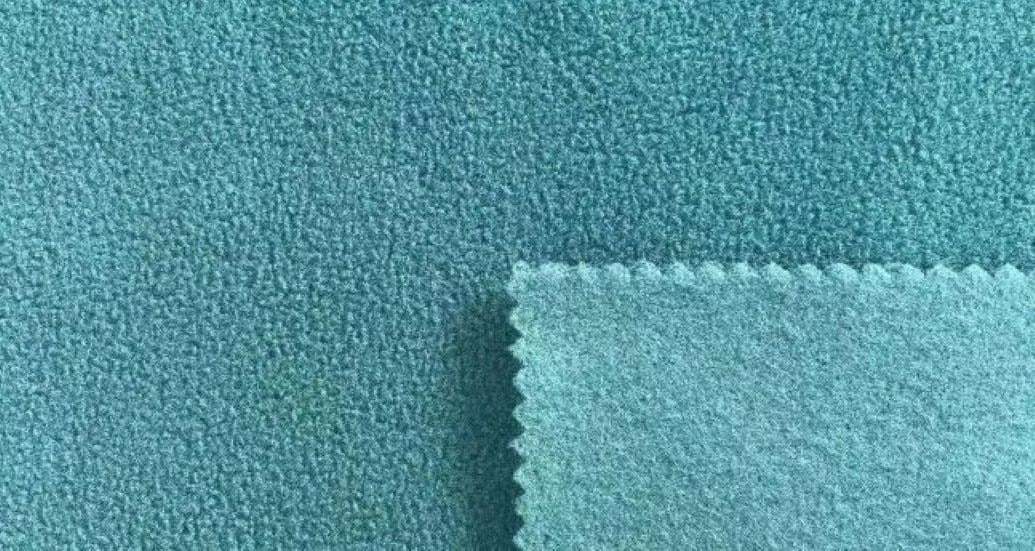
What Makes Microfleece Special
Microfleece is a thin and soft fabric. It feels gentle on your skin and keeps you cozy. This fabric lets air move through while holding warmth close to your body. It also pulls sweat away, keeping you dry during activities. Plus, it dries fast, making it great for outdoor fun.
Microfleece is thinner than heavier fleece types. It’s not bulky, so it’s easy to layer in cold weather. Tiny air pockets in the fabric help trap heat, keeping you warm without extra weight. Whether hiking, running, or relaxing at home, microfleece works well for many needs.
Good and Bad Sides of Microfleece
Microfleece has many good points. It keeps you warm without being heavy. It’s easy to carry and wear for long periods. The fabric is strong and doesn’t tear or fade easily. It also absorbs very little water, so it stays useful even when wet.
But there are some downsides. Washing microfleece can release tiny fibers into the water, which may harm the environment. A single item can release thousands of these fibers. Still, its benefits often make it a top choice for people needing a handy and flexible fabric.
Best Ways to Use Microfleece
Microfleece is great for outdoor clothes and everyday wear. It’s perfect as a middle layer in cold weather, keeping you warm without limiting movement. Microfleece blankets are soft and light, ideal for cozy nights or camping trips. This fabric also works well for sportswear because it stretches and keeps you dry.
If you want comfort and usefulness, microfleece is a smart pick. Whether you need a light jacket or a soft blanket, microfleece does the job well.
Coral Fleece: Soft and Cozy

What Makes Coral Fleece Special
Coral fleece is known for being super soft and comfy. It is made from fine polyester fibers, giving it a smooth and plush feel. This fabric is light but keeps you warm, making it great for cool nights. It stays soft even after many washes, thanks to its durability.
Home décor experts also like coral fleece for its stylish look and great craftsmanship.
Use Area | Important Features | Market Share/Value |
|---|---|---|
Clothing | Softness, warmth, and affordability | |
Home Items | Plush feel, low cost, and wide appeal | 30% of demand, 12% of Europe’s market |
Sportswear | Wicks sweat, dries fast, and resists bacteria | 9.3% yearly growth since 2020 |
Good and Bad Sides of Coral Fleece
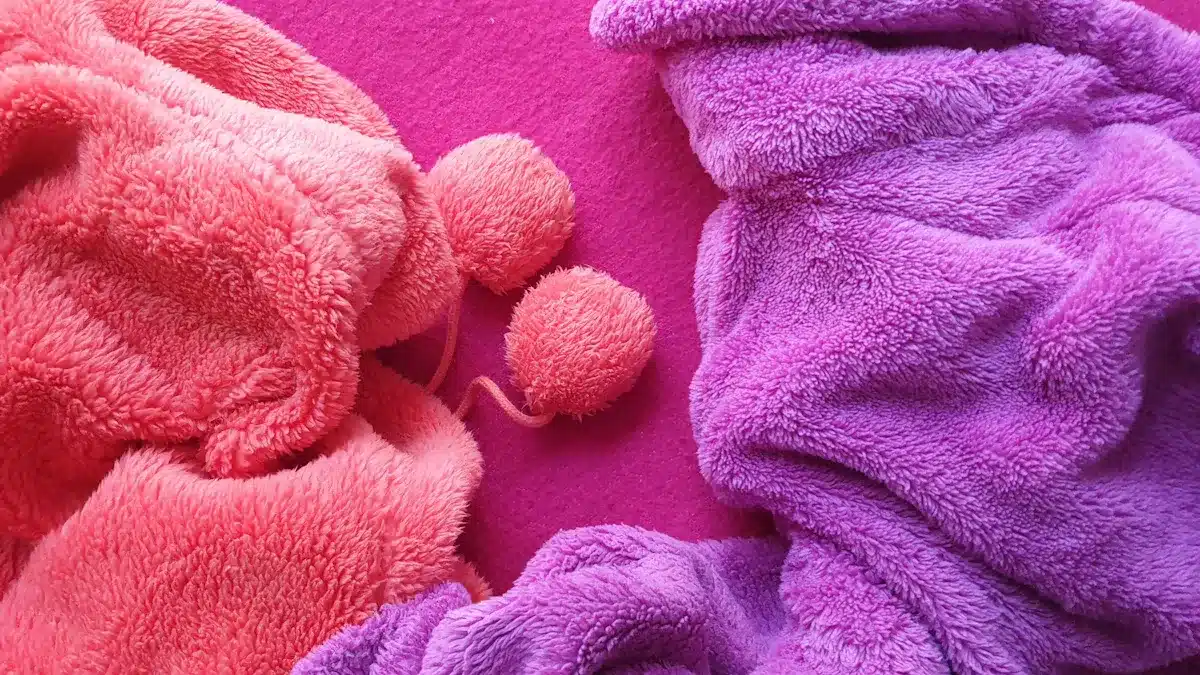
Coral fleece has many good points. It is very soft, making it great for blankets and comfy clothes. It keeps you warm without feeling heavy. It’s also easy to care for because it doesn’t wrinkle and dries quickly.
But there are some downsides. It doesn’t let air flow as well as other fleece types, so it’s not the best for hard workouts. Also, washing it can release tiny fibers that might harm the environment.
Pros:
Super soft
Light but warm
Strong and easy to clean
Cons:
Not very breathable
May cause environmental issues
Best Ways to Use Coral Fleece
Coral fleece is perfect for soft and stylish home items. Blankets made from coral fleece are warm and cozy, great for relaxing on the couch or adding a fancy touch to your bed. It’s also used for comfy clothes like robes and pajamas.
For kids, coral fleece is a great choice because it’s gentle on the skin. It’s ideal for baby blankets, stuffed toys, and even pet beds. If you want something soft, warm, and long-lasting, coral fleece is a smart pick for many uses.
Sherpa Fleece: Warm and Stylish

What Makes Sherpa Fleece Special
Sherpa fleece is a soft and useful fabric. It is made from 100% polyester, which makes it high-quality and very soft. This fabric is warm but not too heavy. It keeps you cozy in cooler seasons like fall and spring.
Sherpa fleece is built to last. Strong features like a reinforced shoulder yoke make it great for outdoor use. It also has helpful details like a full zipper, elastic cuffs, and a drawstring bottom to keep you warm. Many Sherpa fleece clothes have zippered pockets, which are handy for carrying small things or warming your hands.
Feature | Description |
|---|---|
Material | 100% polyester sherpa fleece, soft and high quality. |
Insulation | Keeps you warm without overheating, great for fall and spring. |
Durability | Reinforced shoulder yoke adds strength for outdoor activities. |
Weather Protection | Full zipper, elastic cuffs, and drawstring bottom hold warmth in. |
Storage | Zippered pockets for small items or warming hands. |
Good and Bad Sides of Sherpa Fleece
Sherpa fleece has many good points. It keeps you warm in cold weather. Its softness makes it a favorite for cozy clothes and blankets. But it has one downside. Sherpa fleece attracts pet hair, so you might need a lint roller to clean it.
Pros:
Very warm
Soft and comfy
Strong and good for outdoor use
Cons:
Attracts pet hair, needs extra cleaning
Best Ways to Use Sherpa Fleece
Sherpa fleece is great for making warm and stylish clothing. It’s used in jackets, hoodies, and vests that keep you cozy in cooler weather. Sherpa fleece blankets are also popular because they are soft and feel fancy. These blankets are perfect for cuddling on the couch or adding warmth to your bed.
If you want a fabric that is soft, stylish, and useful, Sherpa fleece is a great pick. Whether you’re outside or relaxing at home, it gives you comfort and warmth.
Berber Fleece: Warm and Textured
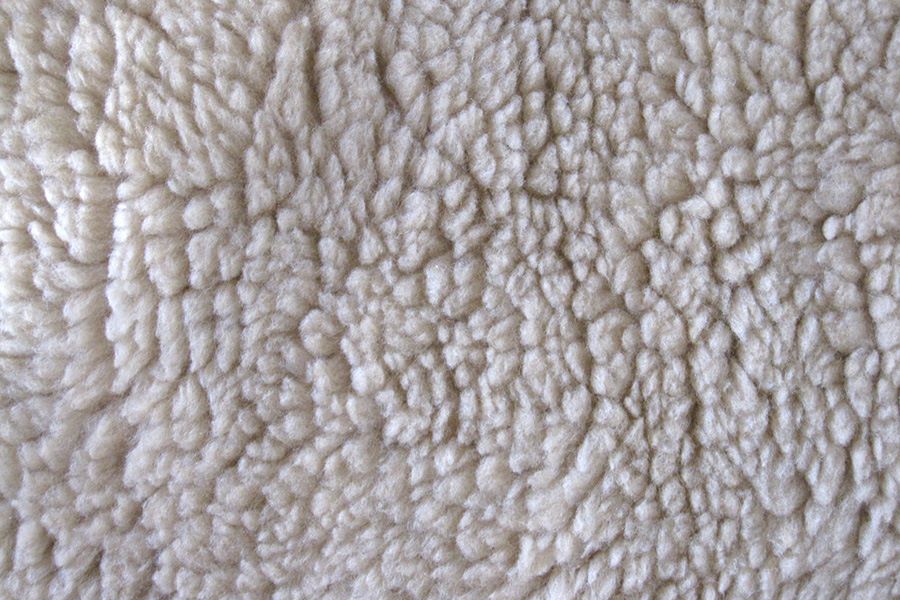
What Makes Berber Fleece Special
Berber fleece is known for its soft texture and warmth. It is made from quiet polyester fibers that feel like natural wool. This fabric is light but keeps you very warm, making it great for cold weather.
Its smart design traps heat well, so you stay cozy. It holds a top temperature of 83.6°F and only drops 10.8°F in two hours. This makes it dependable in chilly conditions. Berber fleece feels soft and doesn’t add bulk, which makes it good for layering.
Feature | Details |
|---|---|
Top Temperature | 83.6°F |
Temperature Drop in 2 Hours | 10.8°F |
Heat Retention | Keeps warmth steady |
Insulation Design | Light but effective |
Fabric Type | Quiet Berber fleece |
Comfort in Cold Weather | Prevents sudden chills |
Pros and Cons of Berber Fleece

Best Ways to Use Berber Fleece
Berber fleece works well for cold-weather clothes and home items. It’s great for jackets, especially quarter-zip and full-zip styles. These designs add warmth and are easy to layer.
Berber fleece blankets are also a cozy choice for your home. They are soft, warm, and look nice, perfect for relaxing on the couch or adding comfort to your bed. You can also use this fabric for casual wear like shirt jackets, keeping you warm in cool weather.
Sherpa Fleece VS Berber Fleece
Although Sherpa fleece and Berber fleece are both variations of polar fleece and share a similar fuzzy appearance, they differ in material, structure, texture, and usage.
1. Sherpa Fleece
Key Features:
Mimics lamb's wool with long, plush pile for an ultra-soft, wool-like feel
Typically has a double-layer structure (fuzzy exterior + knitted backing)
Exceptional warmth, ideal for cold weather
Material:
100% polyester or blends (e.g., polyester/spandex).
Some premium versions use recycled fibers (e.g., rPET).
Common Uses:
Winter jacket linings, blankets, loungewear
Outdoor brands for insulated coats
2. Berber Fleece
Key Features:
Inspired by traditional Berber rugs, with short, dense loops for a sturdy, textured feel.
Usually single-layered and tightly woven, offering less loft but more durability.
Better wind resistance but less plush than Sherpa.
Material:
High-density polyester, often with anti-static treatment.
Premium versions may blend wool or recycled fibers.
Common Uses:
High-performance outdoor gear
Workwear, military apparel (due to abrasion resistance)
3. Side-by-Side Comparison
Feature | Sherpa Fleece | Berber Fleece |
Pile Length | Long, fluffy | Short, tight loops |
Texture | Ultra-soft (wool-like) | Dense, slightly coarse |
Warmth | Extreme (static insulation) | Moderate (active use) |
Wind Resistance | Low | High (tight weave) |
Typical Uses | Daily wear | Outdoor/work apparel |
Neither is natural fiber, but Berber fleece is generally more hardwearing, while Sherpa fleece prioritizes coziness.
Fleece VS Wool
Fleece has many good points but also some downsides. Comparing fleece to wool shows its strengths and weaknesses.
Material | Advantages | Disadvantages |
|---|---|---|
Fleece | Resists water a bit Light and soft Breathes well Dries quickly Easy to clean Doesn't shrink Feels comfy and not itchy | Can melt near fire No warmth when wet May pill over time |
Wool | Stays warm when wet Safe near fire Naturally fights bacteria | Not water-resistant Needs special care Takes longer to dry Shrinks if washed wrong |
Comparison of Different Fleece Weights

Each fleece type has special features that suit certain uses.
The table below shows the main differences of different weight(gsm):
Fleece Type | Weight (gsm) | Warmth Level | Airflow | Best Activities |
|---|---|---|---|---|
Lightweight Fleece | <200 | Medium | High | Layering in cold weather, outerwear in mild weather |
Midweight Fleece | 200-300 | Good | Medium | Hiking, climbing, or casual wear |
Heavyweight Fleece | >300 | Very High | Low | Cold weather use, for people who feel chilly |
Microfleece | <200 | Low | Very High | Light jackets, gym outfits |
Other Classification
Fleece fabric can be grouped by materials, styles, and designs. These groups explain each type’s special features and uses.
By Raw Material
Short-fiber
Short-fiber fleece is made with small fibers. This gives it a smooth and soft feel. It is light and lets air flow well. It’s great for baby blankets or thin clothes. Short fibers also reduce pilling, making it last longer and easier to care for.
Long-fiber
Long-fiber fleece uses longer fibers for more warmth and strength. It is thicker and heavier, perfect for jackets and warm blankets. The long fibers trap heat, keeping you cozy in cold weather.
By Style
Single-brushed/single-milled
Single-brushed fleece has one soft, fuzzy side and one smooth side. It is light and airy, good for layering or mild-weather outfits.
Double-brushed/double-milled
Double-brushed fleece is soft on both sides, making it extra warm. It’s ideal for cozy blankets or winter clothes. Its plush feel makes it a favorite for comfort.
Double-brushed/single-milled
This style mixes double-brushed softness on one side with single-milled smoothness on the other. It’s durable and comfy, great for sportswear or casual outfits.
By Design (Solid colors, striped, checkered, etc.)
Fleece comes in many designs, like solid colors, stripes, or checks. These options let you pick a style for your needs. Special fleece types, like engineered-print or slub fleece, add even more creative choices.
Knowing these groups helps you pick the best fleece for your needs. Whether you want warmth, airflow, or style, there’s a fleece for you.
Fleece fabric works well for clothing, home items, and outdoor jackets. Different types, like microfleece and sherpa fleece, meet various needs. Some are soft, others are warm or strong. Fleece blankets are popular for chilly nights, offering comfort and style.
Think about fleece features when picking one. Guides explain their warmth, softness, and best uses. This helps you choose wisely. Whether you need light layers or warm blankets, there’s a fleece for you. Try fleece and enjoy its cozy benefits in your daily life.
FAQ
What is fleece fabric made of?
Fleece is usually made from polyester, a type of plastic. Some kinds mix polyester with natural fibers like cotton. It is light and keeps you warm, making it great for clothes and blankets.
How do you wash fleece items?
Wash fleece in cold water on a gentle cycle. Don’t use fabric softeners because they can make it less soft. Air-dry it, or use a dryer on low heat if needed.
Is fleece environmentally friendly?
Fleece isn’t fully eco-friendly since it’s made from synthetic materials. Washing it can release tiny plastic pieces into water. Some companies now use recycled polyester to make fleece, which helps reduce harm to the environment.
Can fleece keep you warm in extreme cold?
Yes, fleece traps heat well and keeps you warm. For very cold weather, pick heavyweight fleece or wear layers for extra warmth.
What are the best uses for fleece fabric?
Fleece is perfect for jackets and blankets. It’s light, warm, and breathable, making it great for outdoor fun, casual outfits, and cozy home items.


